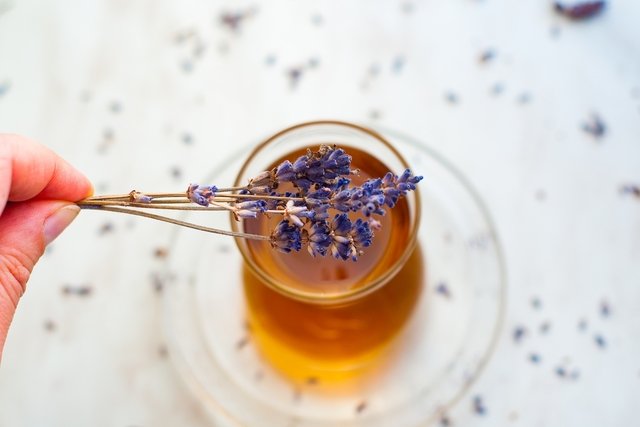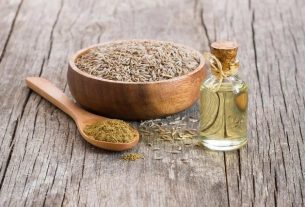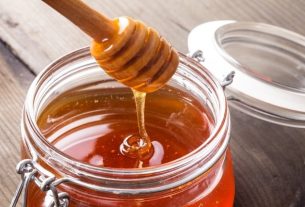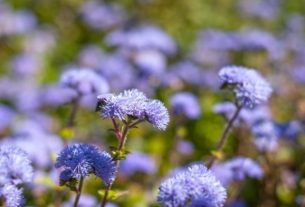Lavender is a medicinal plant, of the species Lavandula angustifoliawidely used to help treat anxiety, depression, poor digestion or even insect bites, due to its relaxing, calming, antispasmodic, analgesic and antidepressant properties.
This plant, also known as lavender or lavandula, can be used to prepare tea or baths, but its essential oil can also be used in aromatherapy or to apply to the skin.
Lavender can be purchased in natural product stores, compounding pharmacies and in some markets or open-air markets, and should be used under the guidance of a doctor or other health professional who has experience with the use of medicinal plants.

What is it for
Lavender is used to treat various problems, presenting several benefits for the body, such as:
1. Decrease anxiety and agitation
Lavender is rich in volatile oils that help reduce anxiety and agitation, as they have a calming and sedative action, and can therefore be used to complement medical treatment.
2. Reduce blood pressure
Lavender, in the form of essential oil, when used in aromatherapy can help reduce blood pressure. In this way, lavender can be used to help with the medical treatment of high blood pressure.
3. Reduce fever
Lavender can help reduce fever slowly, as it has the property of reducing body temperature.
Furthermore, due to its calming and sedative properties, lavender can help you sleep better when you have a fever.
4. Stimulate the healing of canker sores
Due to its healing, anti-inflammatory and analgesic properties, lavender helps to stimulate the healing of canker sores, in addition to reducing pain, inflammation, irritation and the size of canker sores.
5. Stabilize your heartbeat
Lavender can help stabilize the heartbeat and reduce heart excitement, making it useful in treating heart palpitations, especially when used in aromatherapy.
6. Reduce migraine pain
Due to its analgesic properties, lavender can help reduce migraines and headaches, relieving symptoms such as nausea, vomiting or increased sensitivity to light.
In this way, lavender can be used to help alleviate an acute migraine attack, but it should not be used as a treatment to prevent attacks, as in this case it can trigger the attack.
7. Promote relaxation
Lavender has calming and sedative properties, which promote relaxation of the body, in addition to reducing anxiety.
8. Improve sleep quality
Lavender helps to improve the quality and duration of sleep and combat insomnia, as it has calming effects that improve body relaxation and reduce agitation.
9. Reduce stress
Lavender helps reduce stress as it has calming, sedative and relaxing properties.
10. Fight depression
Due to its anxiolytic and antidepressant properties, lavender can help in the treatment of depression and anxiety, as it promotes body relaxation and calmness, in addition to improving sleep quality.
However, lavender does not replace medical treatment with medicines, but can be used to complement the treatment indicated by the doctor.
How to use lavender
The used parts of lavender are its flowers, leaves, stem for making teas, essential oil or for use in cooking.
1. Lavender tea
Lavender tea is great for treating poor digestion problems, migraines, anxiety and menstrual cramps. Discover all the benefits of lavender tea.
Ingredients:
- 1 dessert spoon of lavender flowers;
- 1 cup of boiling water.
Preparation Mode:
Add the lavender flowers to the cup of boiling water and let it rest for 5 to 10 minutes. Then strain, let cool and drink. This tea should be drunk up to 3 times a day, and is recommended after each main meal.
2. Hot bath with lavender
A hot bath with lavender has an excellent relaxing, calming and tranquilizing effect that helps treat excess stress, anxiety and sleep problems. To prepare a lavender bath, simply add 100 g of dried lavender flowers or 6-7 drops of the plant’s essential oil to hot water.
Another way to use lavender in the bath is to place 100 g of lavender flowers in a thin fabric like a baby diaper, for example, tie it to make a bag and secure the bag in the shower using string. In this way, the water comes into contact with the plant and spreads the medicinal properties of lavender throughout the body. Instead of dried flowers, the plant’s essential oil can also be used, which can be previously added to chamomile or mint tea bags, for example.
In addition, to treat sleep and stress problems, bags with dried flowers of the plant can also be used, which should be placed under the pillow, so that they act throughout the night, calming and relaxing.
3. Essential oil massage
Massage with lavender essential oil on the temples is especially recommended for calming headaches caused by stress and muscle tension. To do this massage, you must rub 4 to 5 drops of essential oil on your fingers and then massage your temples in circular movements for a few minutes.
If you feel that the headache is being caused by tension in the neck, then from the temples you should massage the back of the neck in circular movements. See how to massage with essential oils.
Furthermore, due to its calming properties, the essential oil can also be used to treat insect bites, for which it is recommended that you apply 1 to 2 drops of oil on the bite.
Possible side effects
The main side effect of lavender is drowsiness, due to its relaxing and calming properties, but this only occurs when it is ingested in excess.
Furthermore, high intake of lavender can also cause constipation, contact dermatitis, mental confusion and the presence of blood in the urine.
Who shouldn’t use
Lavender should not be used by children under 12 years of age, people with gastritis, gastric ulcers. It is also not recommended for pregnant or breastfeeding women.
As it can cause drowsiness, ingesting lavender is not recommended while driving vehicles or heavy machinery.
Furthermore, it is not recommended to ingest lavender together with medications or substances that depress the central nervous system, such as alcoholic beverages, drugs or hypnotic and anxiolytic medications.

Sign up for our newsletter and stay up to date with exclusive news
that can transform your routine!
Warning: Undefined array key "title" in /home/storelat/public_html/wp-content/plugins/link-whisper-premium/templates/frontend/related-posts.php on line 12
Warning: Undefined array key "title_tag" in /home/storelat/public_html/wp-content/plugins/link-whisper-premium/templates/frontend/related-posts.php on line 13



